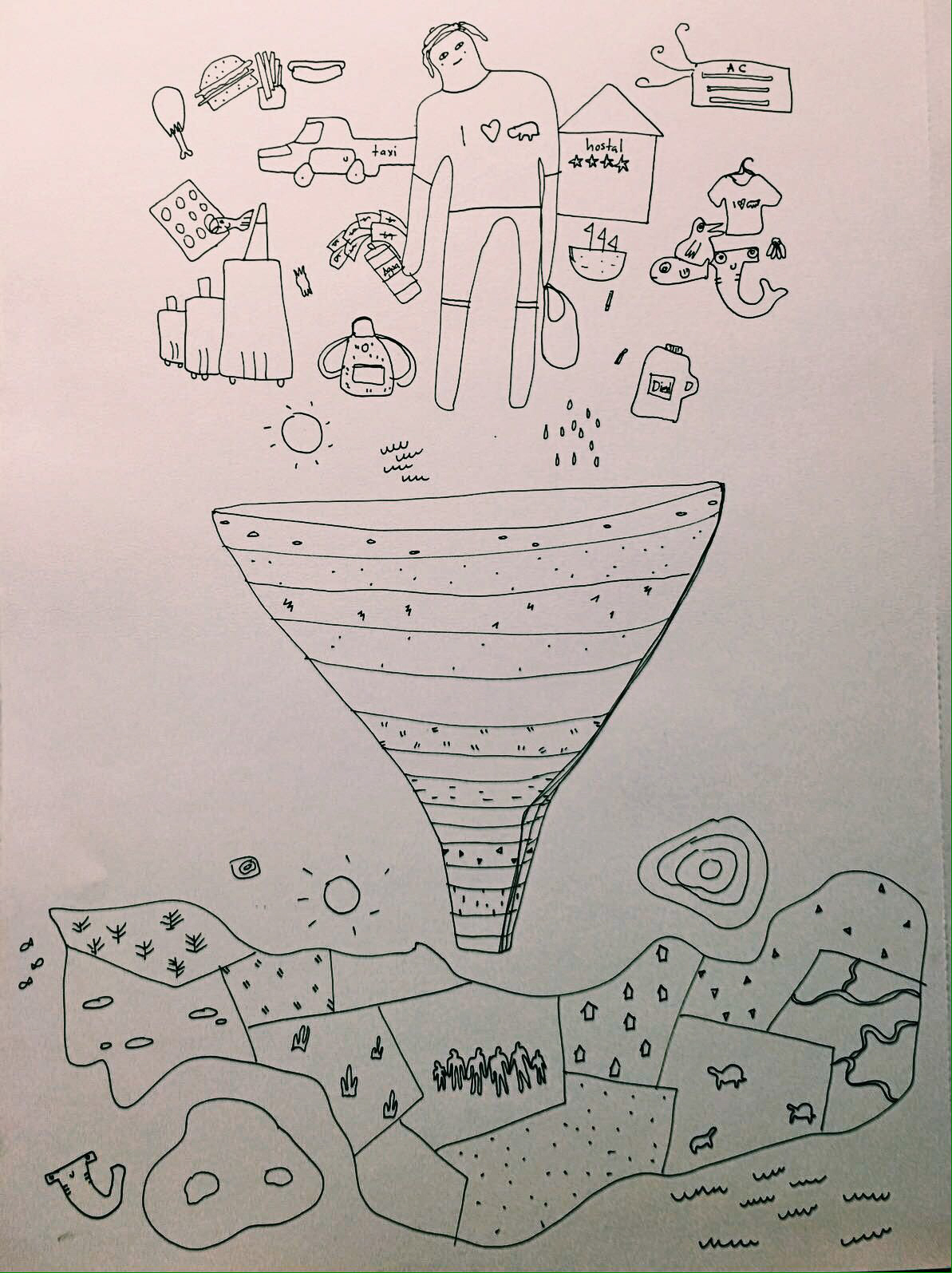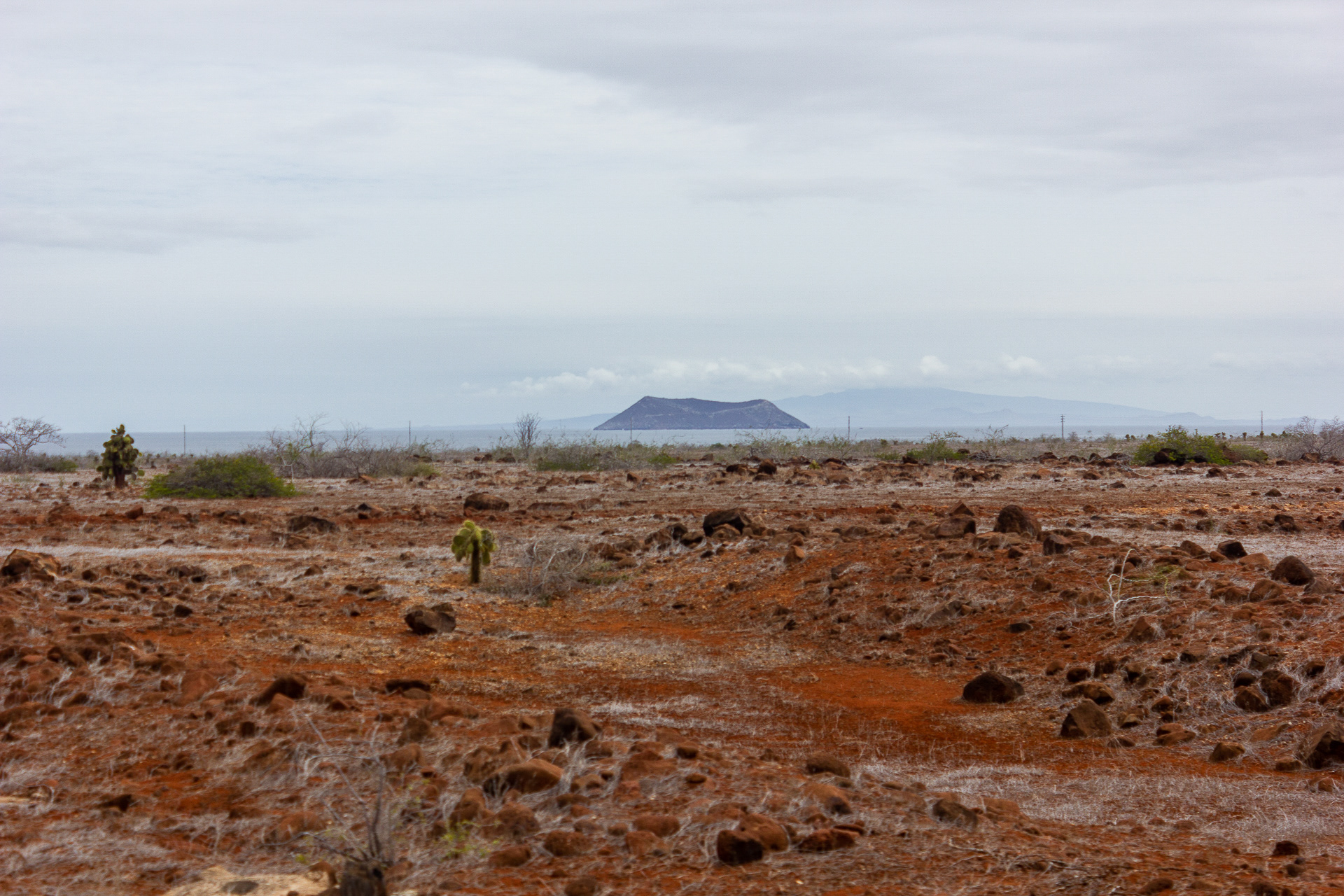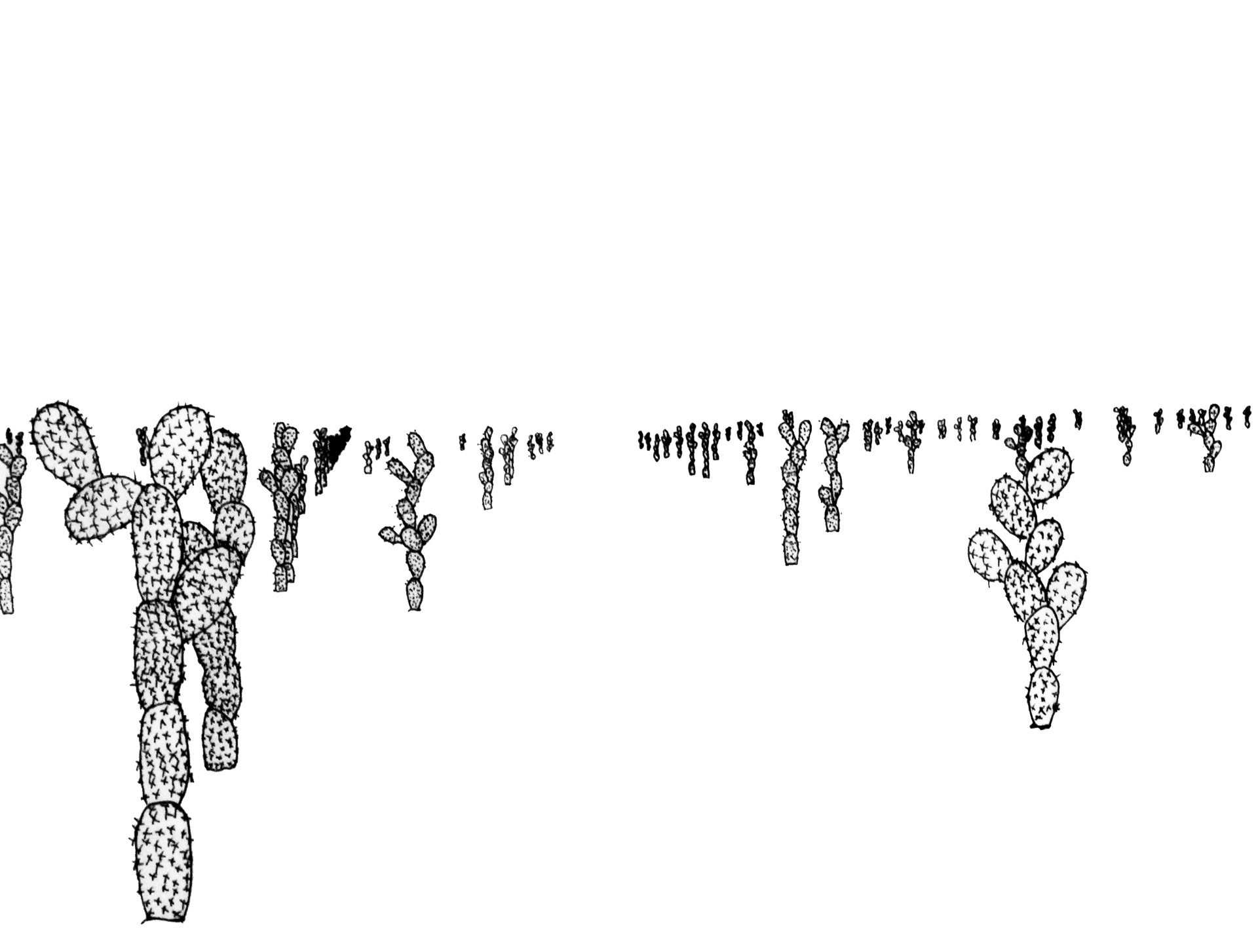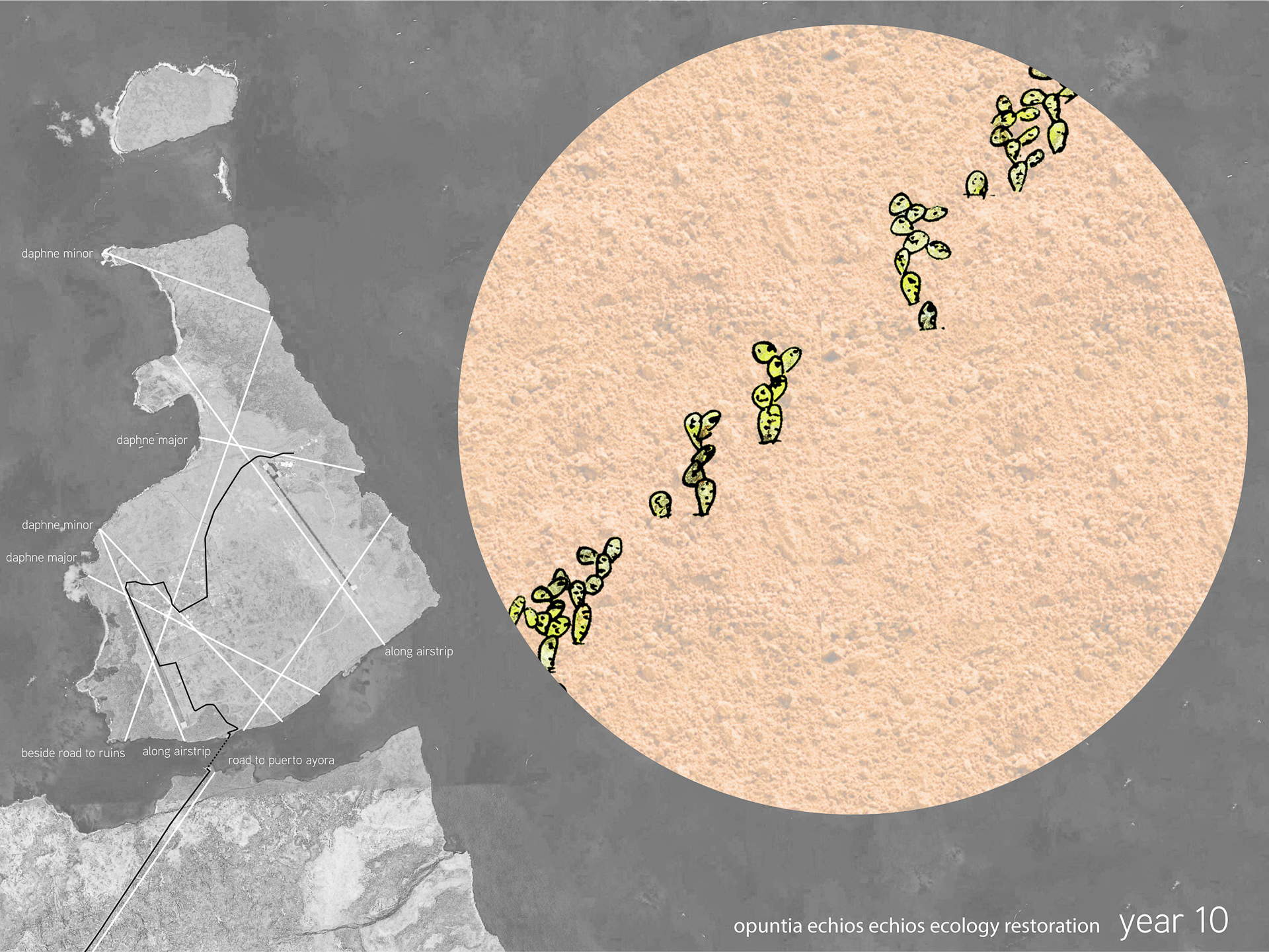Landscape Architecture, Semester 4, Collaborators: Luigi Valentino, Micaela Camacho
Background Information
The Islands of the Galapagos inspired Darwin's theory of evolution, and the unique climate, geology and ecology have captured the imagination of world travelers for centuries ever since. For these reasons, the Galapagos National Park was declared a world heritage site in 1978. Despite being 97% protected land and sea area, the continued pressures of domestic population growth and exponentially increasing tourism threatens these sensitive natural areas. In 2007, UNESCO listed Galapagos National Park and Marine Reserve as a threatened World Heritage Site. Negotiating between these competing goals of space for humans and the protection of valuable ecosystems is the core of my international study into these islands.
Isla Baltra is the largest airport in the Galapagos, carrying 75% of air traffic to and from the islands. The island is a former United States Army Air Force Base: Beta Base. The military used the island to protect the Panama Canal throughout World War II. At the end of United States use, buildings, aircraft and automobiles were dumped into the ocean and the island was given to the government of Ecuador. This culture of destruction, abuse, and waste is typical of human interactions with the islands.



Concept
The project site we chose was the journey that tourists and residents experience as the enter the Galapagos. The proposed entrance journey acts as a cultural filter, purifying and prepping visitors for a higher respect for these lands.


The key moments of this journey as it currently exists are seeing the island from the sky, experiencing the harshness of the desert first hand, a five-minute bus ride to the docks, a bumpy, humbling boat ride across Itabaca Canal, and the hour-long bus ride to Puerto Ayora.







Baltra Airport:
Site Analysis



Plan of Existing, Plan of Vision


Axonometric and perspective renderings



Restoration Sequence Diagram
Perspectival lines of endemic Opuntia cactus restoration lead the eye to islets and other key moments in the horizon. This cactus houses and feeds endemic finches, blue footed boobies and formerly extinct land iguana. The cactus bring the island into scale, and accentuate the endlessness and harshness of the desert.






Beta Base
Site Analysis



Plan of Existing, Plan of Vision


Axonometric Rendering